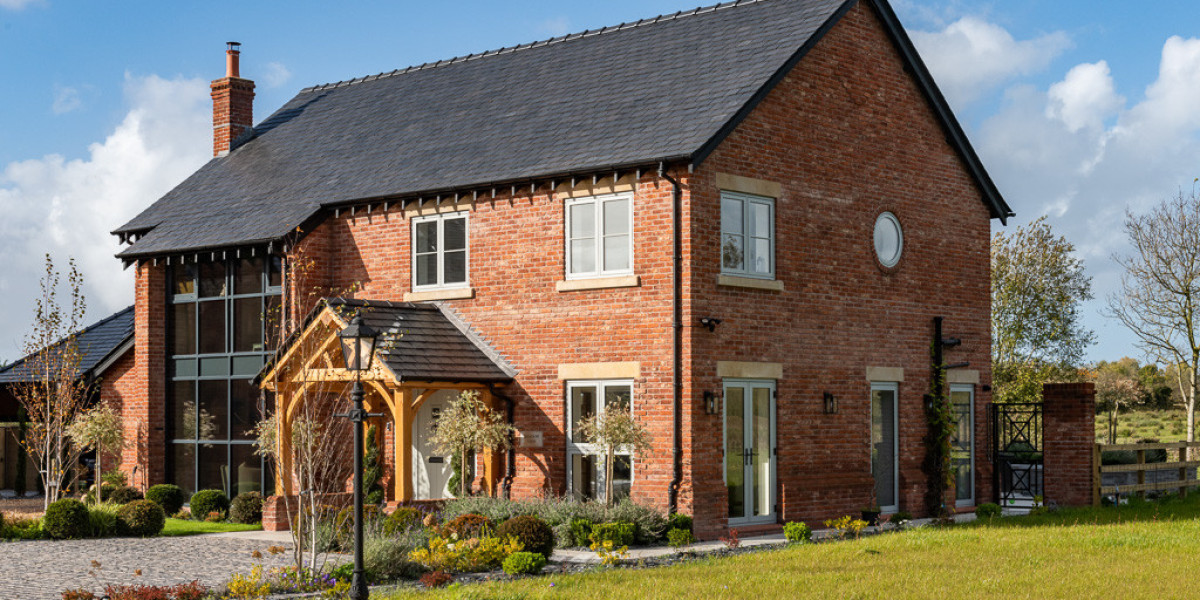A marriage invitation is not just a piece of paper or a digital message—it’s the first glimpse your guests get into your wedding story. It sets the tone for the celebration, reflects your personality, and communicates the love and excitement that mark the beginning of a beautiful journey together.
From handwritten scrolls and printed cards to animated e-invites and website-based invitations, marriage invitations have evolved over centuries, blending tradition with technology. Today, couples have endless ways to express themselves through creative, personalized, and eco-friendly wedding invites that match their theme, culture, and story.
Let’s explore everything you need to know about marriage invitations—from their history, importance, and types to design ideas, modern trends, and useful tips for creating one that perfectly represents your love story.
The Importance of a Marriage Invitation
A marriage invitation is far more than an announcement—it’s the first impression of your wedding celebration. It captures your guests’ attention, conveys essential details, and reflects the style and mood of your big day.
Here’s why a wedding invitation holds such deep meaning:
1. The First Impression
Your marriage invitation card sets the tone for your entire event. Whether you choose an elegant floral design, a modern minimalist layout, or a traditional motif inspired by your culture, the design hints at what guests can expect—formal, fun, themed, or casual.
2. Communicates Essential Details
Every wedding invitation includes vital information—date, time, venue, dress code, RSVP details, and any special instructions. A well-designed card ensures guests know where to be and when, avoiding confusion and ensuring smooth coordination.
3. Symbol of Tradition and Culture
In many cultures, especially in India, a marriage invitation card carries deep symbolic meaning. It’s often accompanied by rituals, blessings, and customs. Many Indian families start the wedding preparations by finalizing the invitation card, considering it auspicious.
4. Keepsake of Memories
Even in today’s digital age, many guests cherish marriage invitations as keepsakes. A creatively designed or beautifully worded card often finds a permanent place in family albums or memory boxes.
A Brief History of Marriage Invitations
The tradition of marriage invitations dates back centuries. In ancient times, weddings were community affairs, and invitations were often delivered orally. However, with the invention of the printing press in the 15th century, written invitations became popular among the elite.
1. The Royal Era
In Europe, royalty and aristocrats would send handwritten wedding announcements, often embossed with their family crests in gold or silver ink. These were sealed with wax and hand-delivered by messengers.
2. The Victorian Influence
During the 19th century, with advances in printing technology, wedding invitation cards became more accessible. The Victorian era popularized elegant typography, lace borders, and poetic language.
3. Indian Traditions
In India, marriage invitations have long held cultural and spiritual significance. Traditionally, they were handwritten on palm leaves, later replaced by printed cards adorned with deities, gold borders, and intricate designs symbolizing prosperity and blessings.
4. The Modern Revolution
The 21st century has seen a transformation in how we invite guests. Digital marriage invitations, video invites, and wedding websites have become the norm—offering convenience, personalization, and sustainability.
Types of Marriage Invitations
When planning a wedding, one of the first creative decisions couples face is choosing the right type of marriage invitation. With technology, culture, and creativity intersecting, there’s a perfect style for every couple.
1. Traditional Marriage Invitations
Traditional cards remain timeless, especially for those who value cultural roots. They often include motifs like Lord Ganesha, Om symbols, peacocks, paisleys, or floral borders. Printed on premium paper with gold or silver embossing, these cards exude class and spirituality.
Sub-types:
Scroll Invitations: Inspired by royal announcements, these come rolled in silk or velvet.
Boxed Invitations: Cards packed in decorative boxes with sweets, dry fruits, or gifts.
Regional Designs: South Indian cards with temple imagery, North Indian designs with kalash or doli motifs, etc.
2. Modern Wedding Invitations
Modern couples often prefer sleek, minimalist designs with clean fonts, subtle colors, and contemporary layouts. These wedding invitations focus on elegance over ornamentation and are often printed on eco-friendly or textured paper.
Popular features:
Pastel color palettes
Geometric or abstract art
Metallic accents
Simple typography
3. Digital Marriage Invitations
The digital marriage invitation trend has gained massive popularity. It’s affordable, eco-friendly, and easy to share through email, WhatsApp, or social media.
Types of digital invites:
E-cards: Static image files with design and text.
Animated Invitations: Short videos featuring the couple, music, and effects.
Wedding Websites: Interactive platforms that host all event details, RSVP forms, photo galleries, and directions.
4. Personalized Wedding Invitations
Custom-designed cards featuring the couple’s names, initials, caricatures, or love story are trending. Personalization makes the invite meaningful and memorable, allowing guests to connect emotionally with the event.
Design Elements That Make a Marriage Invitation Stand Out
Designing a memorable marriage invitation card involves combining creativity with functionality. The right design reflects your theme, culture, and personal taste.
1. Choosing the Right Theme
The theme should match your wedding style—be it royal, bohemian, floral, beach, or traditional. For example:
A destination wedding invitation may feature tropical designs.
A royal wedding card might include gold foil and intricate embossing.
A rustic wedding card could have kraft paper and hand-drawn elements.
2. Color Palette
Colors play a symbolic role in marriage invitations.
Red and gold: Traditional, symbolizing prosperity and love.
Pastels: Modern, soft, and elegant.
Green and cream: Eco-friendly and minimalistic.
3. Typography
The choice of fonts conveys tone. A script font gives a romantic vibe, while serif fonts feel formal. Many couples now mix fonts—one for names and another for event details—to create visual balance.
4. Wording and Tone
The language used in the wedding invitation sets the emotional tone. Whether poetic, formal, or playful, it should reflect the couple’s personality. Example:
5. Visual Motifs and Illustrations
Adding personal illustrations—like the couple’s portrait, cultural icons, or symbolic motifs—makes the invite artistic and unique.
How to Write a Marriage Invitation: The Essential Details
No matter how beautiful your design, the content of a marriage invitation must be clear and complete. Here’s what to include:
Names of the Couple – The highlight of the invitation.
Names of the Hosts – Traditionally, the families inviting guests.
Date and Time – Include all ceremonies if it’s a multi-day event.
Venue Details – Complete address with map link or QR code for digital invites.
Dress Code – Optional but helpful for themed weddings.
RSVP Information – Contact details for confirmation.
Special Notes – Accommodation info, transportation, or wishes registry.
Digital vs. Traditional Marriage Invitations
As modern weddings embrace technology, many couples face a common dilemma—should you go digital or stick with traditional invitations?
Let’s compare both:
| Feature | Traditional Marriage Invitation | Digital Marriage Invitation |
|---|---|---|
| Cost | Higher (printing, postage) | Lower or free |
| Convenience | Physical delivery required | Instant sharing |
| Eco-friendliness | Uses paper and ink | Environmentally friendly |
| Personal Touch | Tangible, sentimental | Interactive, customizable |
| Design Flexibility | Limited to print format | Animated, video, or web-based |
| Response Time | Slower (via calls or text) | Faster (via online RSVP) |
Verdict: Many couples today choose a hybrid approach—sending printed cards to close family and digital invites to distant guests.
Sustainability and Eco-Friendly Invitations
Sustainability has become a major wedding trend. A recent report by WeddingWire India found that 62% of millennial couples are looking for eco-conscious alternatives.
Here are some sustainable marriage invitation ideas:
Use seed paper cards that can be planted after use.
Choose digital marriage invitations to reduce waste.
Print on recycled paper with soy-based inks.
Avoid plastic lamination and excessive packaging.
This not only reduces your carbon footprint but also makes your wedding more meaningful and responsible.
Popular Trends in Marriage Invitations
The world of marriage invitations is constantly evolving. Let’s look at what’s trending this year:
Video Invitations: Couples use animation, voiceovers, and background music to tell their story in 30–60-second videos.
QR Code Integration: Cards now include QR codes linking to maps, RSVP forms, or wedding websites.
Minimalist Designs: Clean layouts with simple fonts are replacing overly decorative cards.
Cultural Fusion: Mixing Western and Indian design elements for multicultural weddings.
AR (Augmented Reality) Invites: Guests can scan the invite to see a 3D animation or message from the couple.
How to Choose the Right Marriage Invitation Designer
Selecting the perfect designer is crucial. Look for these qualities:
Portfolio Diversity: Check if they’ve done both traditional and modern designs.
Customization Options: Ensure they understand your vision.
Material Quality: Request samples if printing.
Budget Flexibility: Discuss pricing before finalizing.
Timeline: Most designers need 2–4 weeks for completion.
Alternatively, many online wedding invitation platforms now allow you to create professional e-cards and videos in minutes.
Cost of Marriage Invitations
The cost of a marriage invitation varies widely depending on design, material, and quantity.
| Type | Average Cost (India) |
|---|---|
| Basic Printed Card | ₹25–₹50 per card |
| Premium Embossed Card | ₹75–₹150 per card |
| Boxed Invitation | ₹200–₹600 per set |
| Digital E-Card | ₹0–₹500 (one-time design) |
| Video Invitation | ₹1,000–₹5,000 |
Couples can save 40–60% by opting for digital marriage invitations instead of traditional printing.
Tips to Create the Perfect Marriage Invitation
Here are some final tips to make your invitation truly unforgettable:
Start Early: Begin designing 2–3 months before the wedding.
Match the Theme: Align your invitation design with the wedding décor.
Proofread Carefully: Double-check spellings, dates, and venue details.
Add a Personal Touch: A handwritten note or couple’s message adds warmth.
Use High-Quality Printing: If physical, ensure colors and paper are premium.
Go Green: Consider recycled paper or digital formats.
Conclusion: Your Invitation, Your Story
A marriage invitation is more than an announcement—it’s a reflection of your love, values, and creativity. Whether you choose a traditional printed card steeped in culture or a sleek digital invite that’s modern and interactive, what truly matters is that it resonates with your story.
In the end, the best wedding invitation is one that captures hearts, excites guests, and becomes a cherished memory for years to come.






